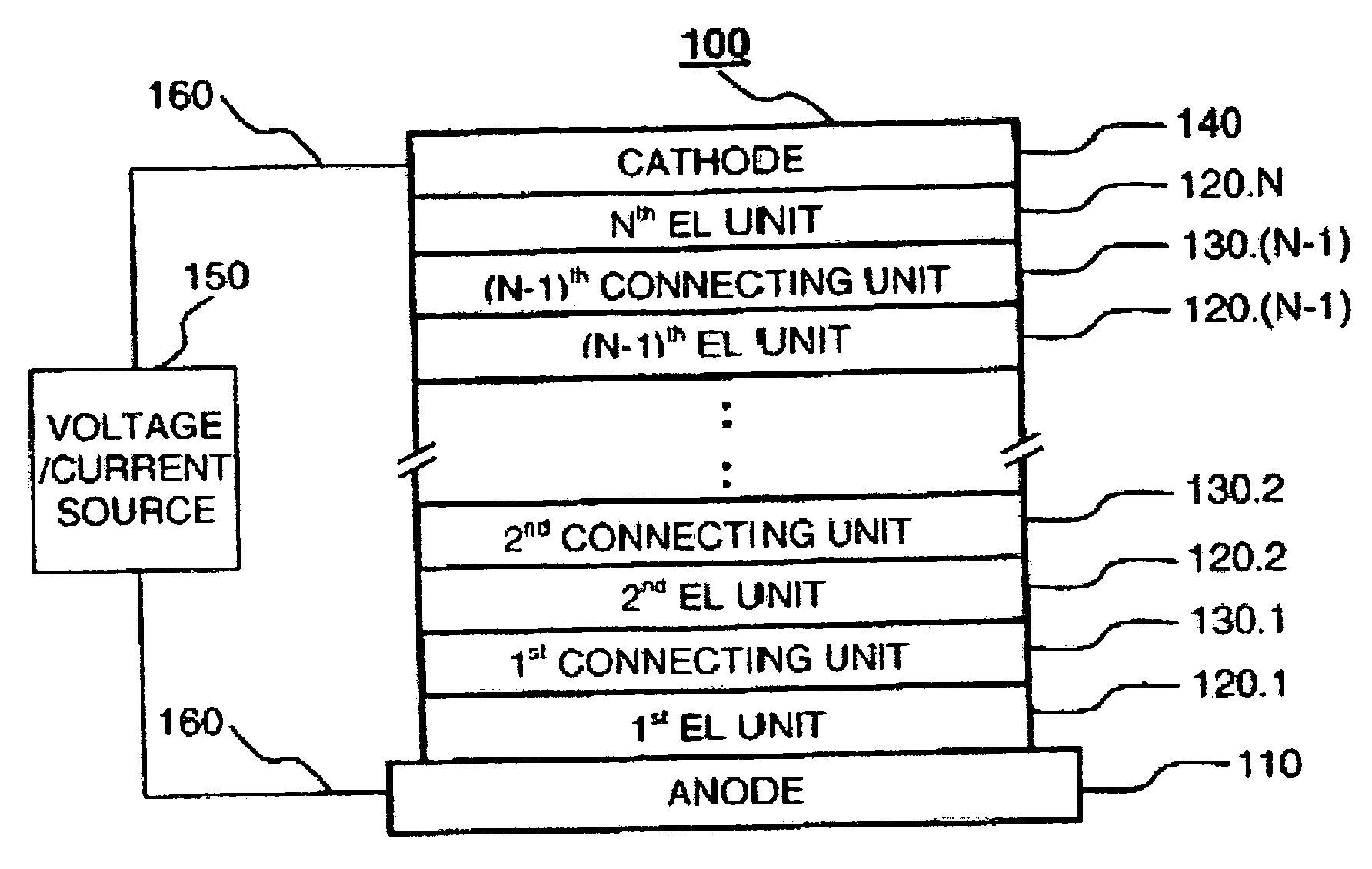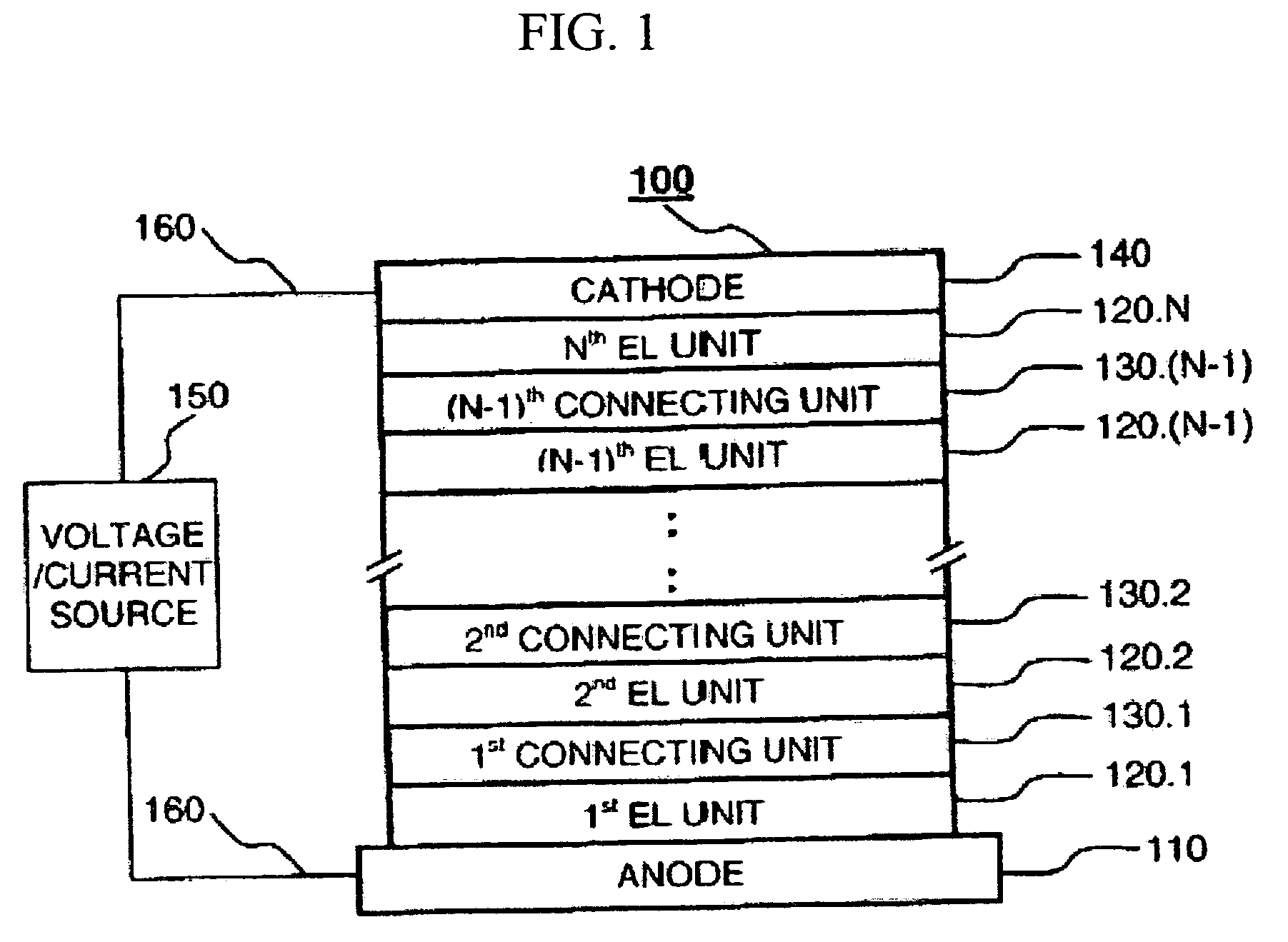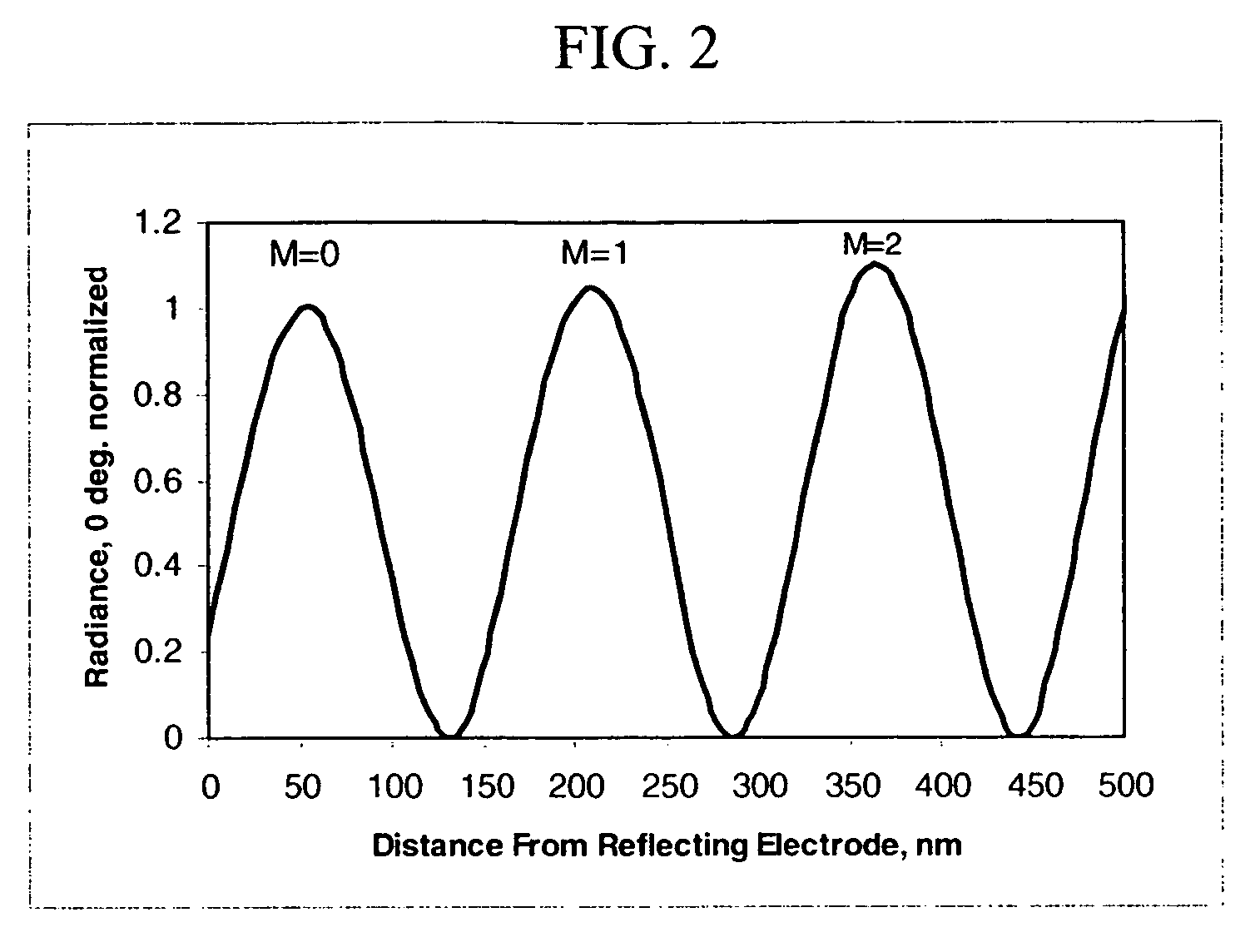Light-emitting layer spacing in tandem OLED devices
a technology of tandem oled and light-emitting layer, which is applied in the direction of discharge tube luminescnet screen, discharge tube/lamp details, electric discharge lamps, etc. it can solve the problems of high operating voltage, high angle dependence of devices, and difficulty in including white light-emitting units in tandem oled structures, etc., to reduce the thickness of the layer, improve light output, and operate at a lower voltage
- Summary
- Abstract
- Description
- Claims
- Application Information
AI Technical Summary
Benefits of technology
Problems solved by technology
Method used
Image
Examples
Embodiment Construction
[0025]FIG. 1 shows a tandem OLED 100 in accordance with the present invention. This tandem OLED has an anode 110 and a cathode 140, at least one of which is transparent. Disposed between the anode and the cathode are N organic EL units 120, where N is an integer greater than 1. These organic EL units, connected serially to each other and to the anode and the cathode, are designated 120.1 to 120.N where 120.1 is the first EL unit (adjacent to the anode) and120.N is the Nth unit (adjacent to the cathode). The term EL unit 120 represents any of the EL units named from 120.1 to 120.N in the present invention. When N is greater than 2, there are organic EL units not adjacent to the anode or cathode, and these can be referred to as intermediate organic EL units. Disposed between any two adjacent organic EL units is a connecting unit 130. There are a total of N−1 connecting units associated with N organic EL units and they are designated 130.1 to 130.(N-1). Connecting unit 130.1 is dispose...
PUM
 Login to View More
Login to View More Abstract
Description
Claims
Application Information
 Login to View More
Login to View More - R&D
- Intellectual Property
- Life Sciences
- Materials
- Tech Scout
- Unparalleled Data Quality
- Higher Quality Content
- 60% Fewer Hallucinations
Browse by: Latest US Patents, China's latest patents, Technical Efficacy Thesaurus, Application Domain, Technology Topic, Popular Technical Reports.
© 2025 PatSnap. All rights reserved.Legal|Privacy policy|Modern Slavery Act Transparency Statement|Sitemap|About US| Contact US: help@patsnap.com



